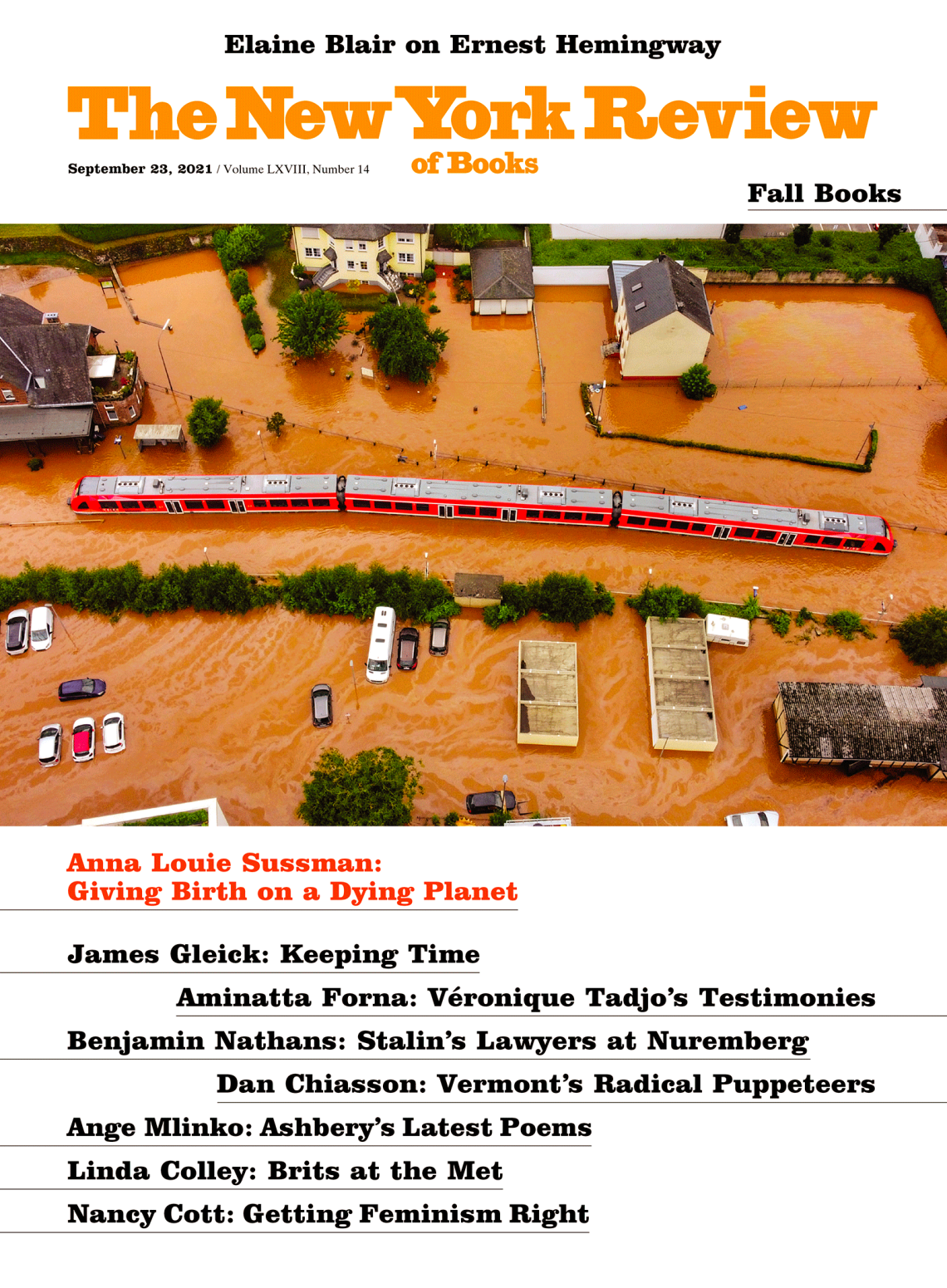In response to:
What Price Is Right? from the June 10, 2021 issue
To the Editors:
In his cogent and timely review of Howard Steven Friedman’s Ultimate Price: The Value We Place on Life [NYR, June 10], Cass R. Sunstein wisely focuses on the Federal September 11th Victim Compensation Fund, which became law just weeks after the September 11 attacks. As the special master of the September 11 Fund, I distributed over $7 billion in public taxpayer money to approximately 5,300 eligible victims and their families. I valued each life lost or physically injured, and made official determinations as to both victim eligibility and compensation.
Sunstein correctly focuses on a few issues that deserve further clarification:
(1) He credits me with developing a compensation formula to value individual lives. Not quite accurate. The new statute itself required me to rely upon existing state wrongful death laws governing the valuation of a human life. My discretion was, therefore, limited by the very state laws that consider such factors as economic loss suffered by the victim, as well as pain and suffering.
(2) In making such individual calculations, Sunstein asserts that I “imposed an annual income cap of $231,000” in calculating the economic loss suffered by an individual victim. Not so. My formulas in calculating the value of a life did presume that 90 percent of the September 11 victims earned no more than $231,000 annually, but I invited high-end income earners—with annual multimillion-dollar incomes primarily at the World Trade Center—to submit additional evidence well beyond $231,000. In such cases, I calculated economic loss and authorized payments as high as $8 million each (the average payment of a September 11 death claim was $2 million).
(3) In his book, Friedman criticizes current law by stating that “undervalued lives are left underprotected…[and] are infused with gender, racial, national, and cultural biases.” The September 11 Fund recognized these very problems in valuing lives, and took pains to avoid using these biases in calculating human value. We expressly fashioned formulas that avoided considerations of race, gender, and nationality. Undocumented workers who died in the World Trade Center were eligible to receive compensation; male and female victims—lawyers, stockbrokers, receptionists, firefighters, first responders, etc.—were subject to the same rules and conditions in order to promote fairness. All victims received the higher calculations based on the higher earning power of victims in similar occupations.
(4) Friedman also complains that, as Sunstein writes, “the victim’s expected lifetime income should have been deemed irrelevant.” Perhaps. But a primary purpose of the September 11 Fund was to encourage individual victims and their families voluntarily to participate in the fund and, in return, forgo their right to litigate in court against would-be negligent parties like the airlines, the World Trade Center, the Port Authorities of New York and Boston, etc. In order to incentivize voluntary participation, each calculation had to take into account the unique circumstances of the individual applicant. One size could not fit all.
(5) Finally, Friedman asserts that mathematical calculations of loss are “inconsistent with basic principles of fairness and human dignity.” This is a powerful and persuasive criticism of how our current legal system determines compensatory damages in the courtroom. But, again, the September 11 Fund dealt with this issue head on. It welcomed any individual claimant voluntarily to request an opportunity to meet with me in confidence, to lament about life’s unfairness, and to validate the memory of a lost loved one. During the thirty-three-month life of the September 11 Fund, I met in confidence with some nine hundred individual family members, to listen and empathize with the families trying to cope with loss. I believe the ultimate success of the September 11 Fund—with 97 percent of all eligible families voluntarily opting to participate rather than litigate—is attributable in large part to the availability of these private hearings designed to promote “fairness and human dignity.”
In sum, much of Friedman’s criticism in his timely book was expressly addressed some twenty years ago during my administration of the fund. It is a precedent worth examining in determining “the value we place on life.”
Kenneth R. Feinberg
Washington, D.C.
This Issue
September 23, 2021
Conceiving the Future
The Well-Blown Mind
Hemingway’s Consolations


